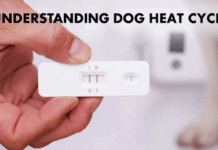Last Updated on March 8, 2022 by Dogs Vets
The Top 7 Best Fish Oils for Dogs of 2022
The Complete Guide to Fish Oils for Dogs and How They Can Help Your Furry Friend
Fish oils are a great source of omega 3 fatty acids, which are essential nutrients for your dog. These oils also have a calming effect on your dog.
In today’s world, it is not uncommon to see a dog with dry and flaky skin. You may have tried all sorts of treatments for your furry friend, but nothing has worked so far.
So what is the solution? Fish oils, of course! Fish oils are very beneficial for your dog’s health and can help them maintain healthy skin and fur. They contain antioxidants that can help in fighting free radicals in your dog’s body.
The Benefits of Using a Good Fish Oil on Your Dog’s Health and Physical Activity
Fish oil is a supplement that can help your dog’s health and physical activity. It is a great way to supplement your dog with the essential fatty acids that they need.
Fish oil supplements are not only good for dogs, but also for humans.
Fish oil supplements contain omega-3 fatty acids which are important for the brain and heart. They can lower triglycerides, reduce inflammation, and improve blood flow.
The benefits of using good fish oil on your dog’s health and physical activity are endless – it can be used to help with joint pain, skin problems, hair loss, dry skin, allergies, etc.
Fish oil helps to improve the skin, joints, and other parts of your dog’s body.
Dr. Theresa Fossum, DVM and board-certified veterinary surgeon, explains that fish oil supplements can benefit dogs as they do humans.
“Like humans, dogs need omega-3 fatty acids to support their immune function, muscle recovery, and joint and heart health,” says Dr. Fossum.
“If your dog has dry skin or a dull coat, they are likely to benefit from adding omega-3 fatty acids to their diet.”
However, there are many fish oils for dogs out there and it can be confusing to select a good one.
The Types of Fish Oils that Pets Need in Their Diet
Fish oils are an essential part of a pet’s diet, but not all fish oils are created equal. There are four main types of fish oil that pets can benefit from:
Alaskan salmon oil
Salmon is rich in omega-3 fatty acids, which help support healthy skin and coat. When your pet has dry skin or itchy skin, adding salmon oil to their diet can help their condition.
Cod liver oil
Cod liver oil is high in vitamin A and D, which are important for maintaining a healthy immune system and strong bones.
Vitamin D also helps support the absorption of calcium. Cod liver oil is also rich in vitamin E, which promotes healthy cell growth and repair as well as supports the production of collagen.
Pumpkin seed oil
Pumpkin seed oil is one of the best oils you can use on your pets if they are suffering from a variety of skin ailments. It isn’t just used for humans either – it’s perfect for dogs and cats too. Fish oils are also important in order to maintain healthy skin and coats in both animals and humans.
This article will list the Top 7 fish oils that you should consider adding to your dog’s diet in 2022.
Here, are the best fish oils for dogs.
#1. Our Best Pick: Zesty Paws Wild Alaskan Salmon Oil for Dogs & Cats

- Delivery Method: Liquid
- Calories: 40 per teaspoon
- DHA: 425 mg
- EPA: 340 mg
What We do Like
- Good source of DHA and EPA
- Sourced from wild-caught Alaskan salmon
- Safe for dogs and cats
- Convenient pump container
What We Dislike
- Must be refrigerated after opening
- Pricey
The Zesty Paws Pure Wild Alaskan Salmon Oil is a premium fish oil supplement for dogs, formulated to provide both DHA and EPA in each teaspoon. The oil comes in an easy-to-administer pump-top jar, making it convenient to use.
This product contains no artificial flavors, preservatives, or synthetic colors, and it’s made in the USA. Zesty Paws offers a 100% Satisfaction Guarantee on its products. In addition, this fish oil can be used to benefit cats as well.
#2. Most Affordable: Nutramax Welactin Omega-3 Skin Supplement for Dogs

- Delivery Method: Softgel capsule
- Calories: Not listed
- DHA: 100 mg
- EPA: 155 mg
What We do Like
- More affordable than other options
- Minty scent
What We Dislike
- Calories not listed
- Large dogs need several capsules per day
Fish oil supplements for pets can be fairly expensive, especially if you have multiple animals. However, the Welactin Omega-3 Supplement is a little more cost-effective.
The supplement comes in softgel capsules that can either be placed directly into your pet’s mouth or used to add flavour to food. It contains peppermint oil to help neutralize the fishy odor. The formula contains 300 mg of total omega-3 fatty acids per capsule and instructs owners to give one capsule daily per 20 pounds of body weight.
#3. Grizzly Omega Health Omega-3 Supplement for Dogs and Cats

- Delivery Method: Liquid
- Calories: Not listed
- DHA: 365 mg
- EPA: 450 mg
What We do Like
- Great value for multi-pet homes
- Has NASC quality seal
- Potent in omega-3s
What We Dislike
- Strong odour
- The pump can get messy
For owners of multiple pets, The Grizzly Omega Health Liquid Fish Oil Supplement features a 64-ounce jar that will last you longer and save you money.
The fish oil is sustainably sourced from Alaskan salmon and pollock, which makes it higher in omega-3 fatty acids. It contains 1,090 mg of omega-3 fatty acids per teaspoon, making it an extremely potent choice.
The brand recommends giving your dog 1 pump of fish oil per 25 pounds of body weight, and the bottle has an easy-to-use top pump for convenient dispensing. The product is made in the USA and features the quality seal of the National Animal Supplement Council, and it’s safe to give cats, as well.
#4. Nutri-Vet Fish Oil for Dogs- Helps Supports Natural Shedding

- Delivery Method: Softgel capsule
- Calories: Not listed
- DHA: 120 mg
- EPA: 180 mg
What We do Like
- Convenient softgel form
- Mess- and odor-free
- Includes supplemental vitamins
What We Dislike
- Calories not listed
Nutri-Vet Fish Oil for Dogs is extremely easy to administer to a dog. The Nutri-Vet softgel capsules contain 100 mg of fatty acids, vitamins A, E, and D, as well as 300 mg of fish oil.
Since the capsules are odor-free and mess-free, they can easily be administered to your dog without any difficulty.
This product comes in a bottle containing 100 capsules and each capsule should be given to dogs between 30 and 60 pounds in weight. If your dog is larger than 60 pounds, you should give them two pills per day.
#5. Nordic Naturals Omega-3 Pet Liquid Supplement

- Delivery Method: Liquid
- Calories: Not listed
- DHA: 414 mg
- EPA: 690 mg
What We do Like
- Sustainably made
- High potency
- Tested by a third party
What We Don’t Like
- Calories not listed
- Expensive
Fish oils like Nordic Naturals Omega-3 Pet Supplement are an ideal way to provide your furry friend with omega-3 fatty acids from fish oil.
This supplement is made from fresh, wild-caught sardines, mackerel, anchovies, and herring caught in the coastal waters of Iceland. It is free of artificial colours, flavours, or preservatives, and it’s been purified to remove 99% of the unpleasant fishy taste and smell. This product is bottled in an FDA-certified facility and has been tested by a third-party firm.
#6. PetHonesty Omega-3 Fish Oil Dog and Cat Supplement

- Delivery Method: Liquid
- Calories: 41.4 per teaspoon
- DHA: 525 mg
- EPA: 800 mg
What We do Like
- High in EPA and DHA
- Minimal odour
- Tested by a third party
What We Dislike
- Pump can break
PetHonesty’s Omega-3 Fish Oil Dog & Cat Supplement contains 1,438 mg of omega-3 fatty acids per two pumps. The fish oil is made from sardines, mackerel, anchovies, and herrings caught off the coast of Iceland.
This supplement is available in liquid form and comes with a convenient pump that allows you to dispense it directly onto your dog’s food. The fish oil is purified to remove the fishy odour and is third-party tested by a lab accredited by the National Animal Supplement Council (NASC).
#7. American Journey Wild Alaskan Salmon & Pollock Oil Supplement

- Delivery Method: Liquid
- Calories: 38.1 per teaspoon
- DHA: 315 mg
- EPA: 360 mg
What We do Like
- Contains omega-6 and -9 fatty acids
- No-mess squeeze bottle
- Taste is appealing to pets
What We Dislike
- Large serving size for big dogs
The American Journey Wild Alaskan Oil Supplement for dogs contains both omega-6 and -9 fatty acids, which is a rare but beneficial combination.
Each teaspoon contains 90 milligrams of omega-6 and 540 milligrams of omega-9.
The supplement comes in a convenient, mess-free squeeze bottle to make it easy to feed. The formula has a rich salmon flavour that dogs love, and a single bottle lasts up to three months based on the recommended dosage of 1 teaspoon per 10 pounds of their body weight daily.
Final Conclusion
What to Look for in a Dog’s Fish Oil Supplement
Ingredients
It’s crucial to look at the contents of a fish oil supplement just like you would with any other food for your pet. The content of omega-3 fatty acids will be particularly important to look out for in this case.
You should look for EPA and DHA in your product, as there are many good ones available. Dr. Fossum explains that they are two of the most important omega-3 fatty acids.
Fish Oil for dogs Dosage and Method of Delivery
Fish oil supplements are available in both pill and liquid forms, and you’ll want to choose the type that best suits your dog’s needs and tastes.
Pills are frequently less odoriferous and less messy to dispense than liquids, but not all dogs are willing to consume pills.
Alternatively, a liquid supplement can be incorporated into your dog’s meal, which some dogs may find more appealing than a separate supplement.
Adequate Testing
Because pet meals are not regulated by the FDA in the same way that human foods are, it is advantageous to choose a product that has been thoroughly tested for purity by a third party.
“Make certain that the product has been examined by a third-party research firm and that it comes with a money-back guarantee,” advises Dr. Fossum. Another important item to check for is the NASC Quality Seal, which is only available to brands that meet stringent quality requirements.
FREQUENT ASKED QUESTIONS
Is it necessary to obtain a prescription for fish oil for dogs?
Dog fish oil supplements are available over the counter, and they do not require a prescription in order to purchase.
What dosage of fish oil should you give your dog?
According to Dr. Fossum, fish oil can be toxic to dogs that are diabetic, have low blood pressure, have heart arrhythmias, or have illnesses that cause them to bleed.
“Check with your veterinarian for recommendations on how to supplement fish oil in your pet based on its age, breed, and size. “Don’t only follow the directions on the package for the recommended dose.”
Is it okay to offer dogs fish oil that has been formulated for humans?
“Consult your veterinarian before providing fish oil to your pet,” advises Dr. Fossum. “Fish oil is safe for pets.”
In addition, your veterinarian may suggest a brand in which they have trust, and they may aid you in selecting how much to administer.
A product for pets is available from some of the companies that sell human fish oil products. Many times, the only difference between the products they sell for people and those they sell for pets is the concentration or amount of fish oil in the product.”
Facts Check:
We hope you enjoyed this article… What are your thoughts on The Top 7 Best Fish Oils for Dogs of 2022?
Рleаse let us knоw yоur thоughts in the соmments seсtiоn. Feel free to share with us in the comments section below

















